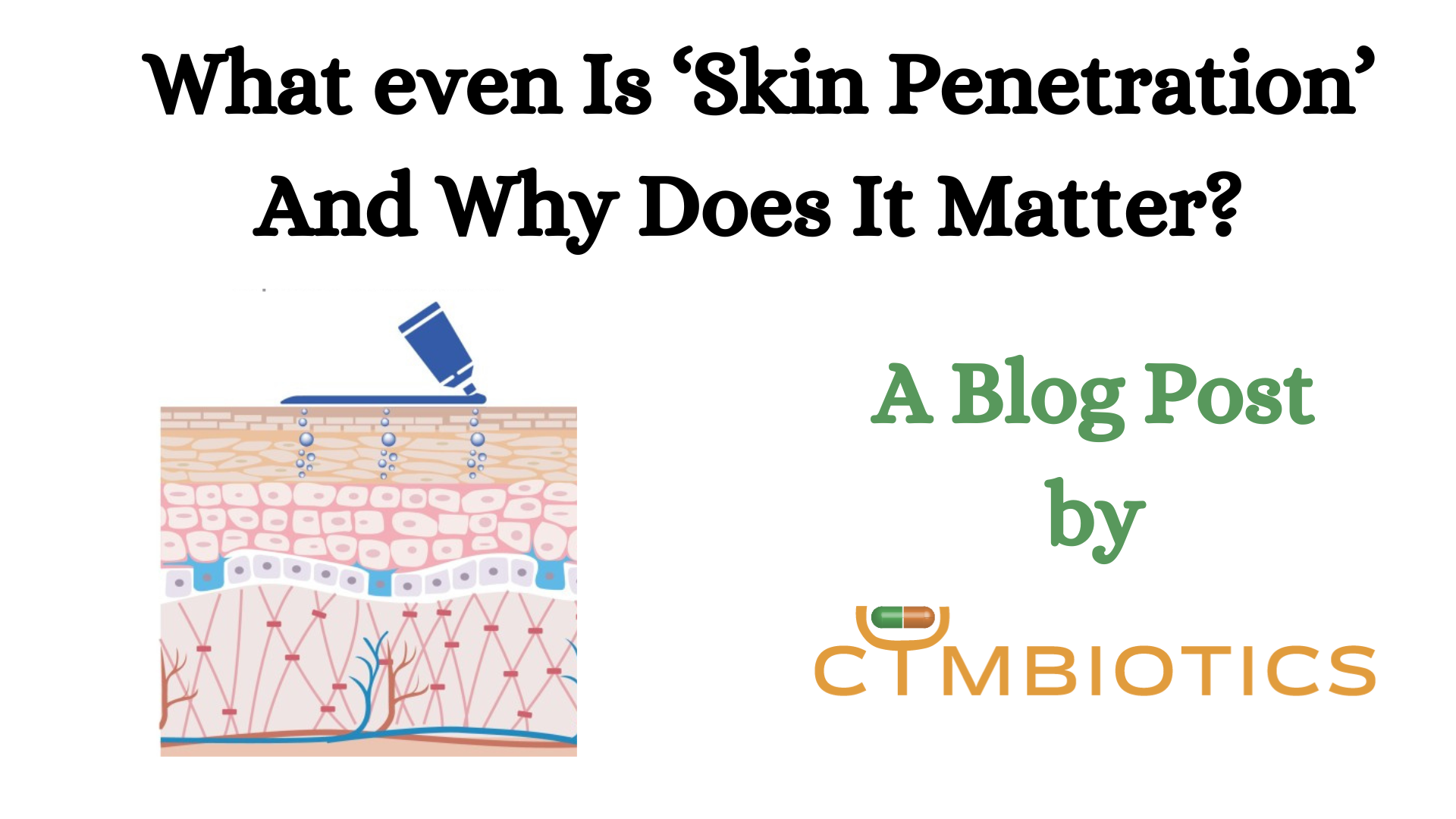We apply creams, ointments and serums expecting them to do something. But how do ingredients in a topical actually reach where they’re needed? Understanding skin penetration isn’t just a scientific curiosity, it’s essential to building safe, effective dermatological treatments.
The Skin Barrier: A Sophisticated Defense System
The skin’s outermost layer, the stratum corneum, is composed of tightly packed, dead keratinocytes embedded in lipids forming a “brick-and-mortar” structure. While this layer is critical for preventing water loss and blocking toxins or microbes, it also creates a formidable obstacle for active ingredients meant to treat underlying skin concerns.
To be effective, a topical formulation must strategically overcome this barrier without damaging it.
How Do Actives Penetrate the Skin?
There are three primary routes for skin penetration:
- Transcellular Route: Through the corneocytes (cells themselves); favors small, hydrophilic molecules.
- Intercellular Route: Around the corneocytes, through lipid layers; preferred by lipophilic compounds.
- Appendageal Route: Via hair follicles and sweat glands; especially important for larger molecules and nanoparticles.
When Penetration Matters Most
Contrary to popular belief, topical products don’t always need to go deep. Sometimes, shallow penetration (as in moisturizers or barrier repair creams) is ideal. Other times such as for anti-inflammatory, antimicrobial, or depigmenting agents we want actives to reach the epidermis or upper dermis.
In contrast, transdermal delivery targets systemic circulation. This requires controlled, sustained penetration and explains why transdermal patches need different formulation strategies than a face cream.
Enhancing Penetration: What Science Has Found
To help actives cross the skin barrier, formulators use various strategies:
1. Chemical Enhancers
Compounds like ethanol, urea, oleic acid, or surfactants alter lipid structures or hydrate the SC, allowing molecules to slip through.
2. Nanocarriers & Vesicular Systems
Modern formulations use nanoparticles or lipid vesicles like cetosomes, liposomes, transfersomes, and invasomes to deliver actives deeper.
3. Physical Methods (in medical R&D)
Microneedles, sonophoresis, and iontophoresis are explored for medical delivery but are not yet standard in cosmetic use.
Why It Matters for R&D and Public Safety
Understanding skin penetration ensures two things:
- Efficacy: The active reaches the layer where it is biologically needed.
- Safety: The formulation avoids unwanted systemic absorption or irritation.
For instance, compounds like corticosteroids require precise delivery not too deep to avoid systemic effects, but deep enough to reduce inflammation. Similarly, poorly formulated cosmetics can lead to barrier disruption or sensitization if not properly balanced.
So, What Can We Take Away?
For modern topical formulation science like the work we do at Cymbiotics Biopharma, understanding and optimizing skin penetration is foundational.
We engineer formulations designed to:
- Enhance local effect
- Respect the skin’s natural barrier
- Avoid systemic exposure
- Deliver actives with precision and minimal irritation
Whether it’s for moisturization, pigmentation, or scalp care; formulation is never guesswork. It’s guided by science at Cymbiotics.
References:
- Current status and future prospects of transdermal drug delivery – Prausnitz & Langer, Nature Biotechnology, 2008
- Penetration enhancement through skin – Karande et al., Advanced Drug Delivery Reviews, 2010
- Transdermal drug delivery: Penetration enhancement techniques – Barry, Advanced Drug Delivery Reviews, 2001
- Lipid vesicles for dermal and transdermal drug delivery – Verma et al., Pharmaceutical Research, 2003
- The effects of chemical enhancers on skin permeability – Benson, Journal of Controlled Release, 2005

